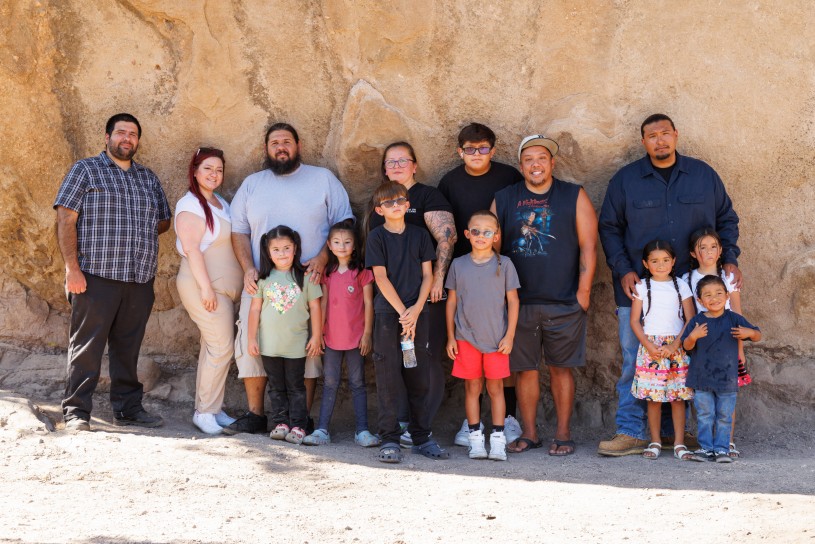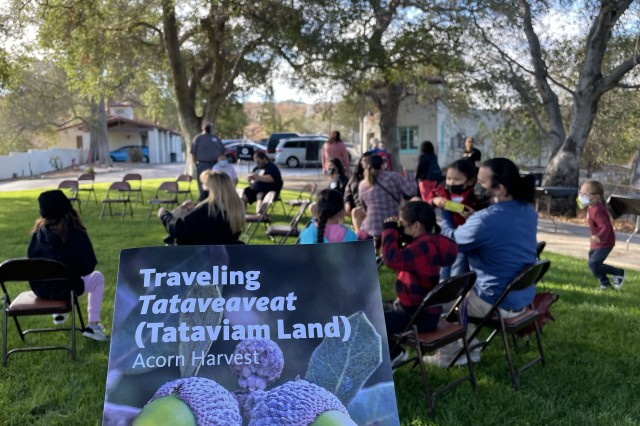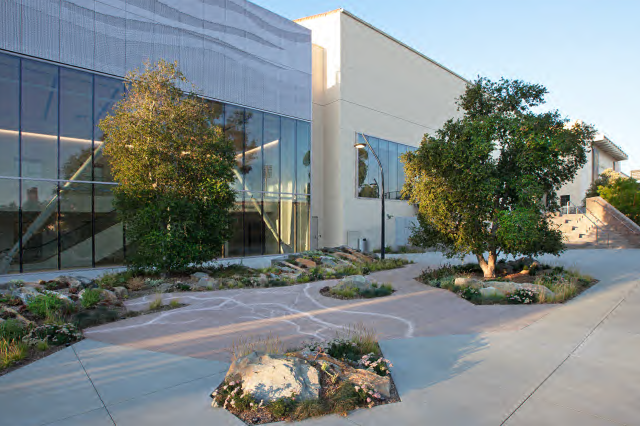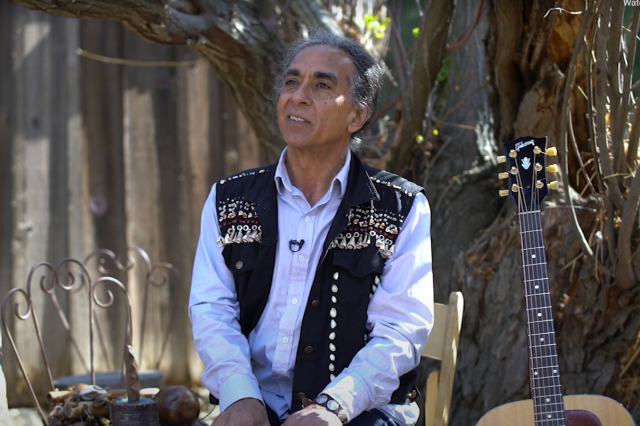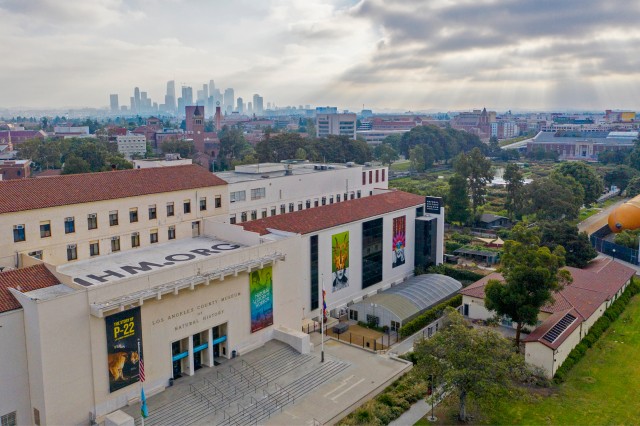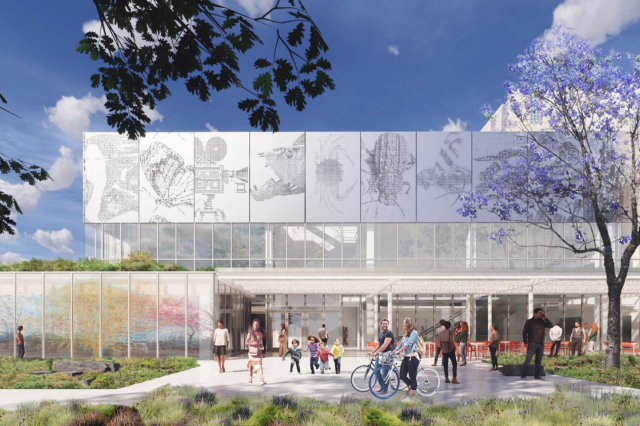
Bedrock Mortars in Southern California
A Connection to Tribal Peoples Cultures and Heritage
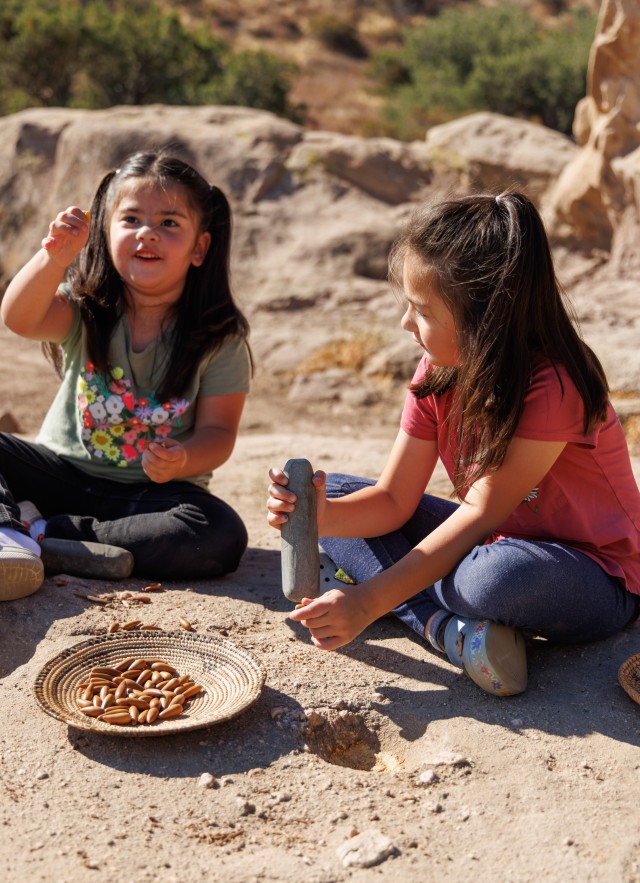
The NHM Commons Community Plaza
As part of honoring and educating the public about the cultures of Southern California Tribal Peoples, the NHM Commons Community Plaza at the Natural History Museum of Los Angeles County features two replicas of bedrock mortars, also known as grinding stones, crafted by artist Lazaro Arvizu Jr. This exhibit provides an interactive and educational experience, allowing visitors to connect with the cultural significance of these tools in the daily lives of Tribal communities. We extend our heartfelt gratitude to the NHM Commons Native American Advisory Council for their invaluable guidance and support in bringing this exhibit to life.
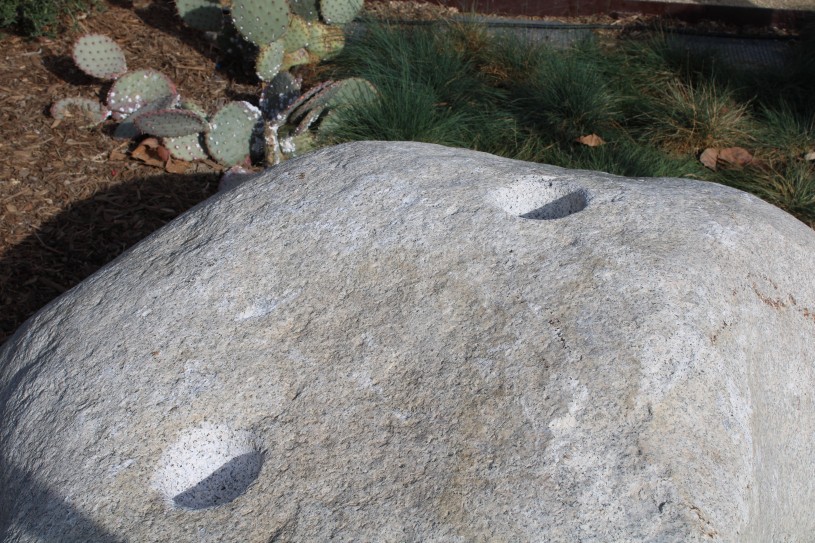
These replicas serve as touchable tools and provide a hands-on look at how bedrock mortars have been used to process acorns, pigments and other seeds. They highlight the durability and design of the mortars, as well as the communal and social roles they played in Tribal cultures. The inclusion of these replicas fosters a deeper appreciation for the environmental stewardship and traditional knowledge passed down by the Tribal Peoples of this unceded land on which the museum stands.
A Connection to Tribal Peoples Cultures and Heritage
Bedrock mortars hold a significant place in the history and culture of Tribal Peoples across Southern California. For many tribes, including the Fernandeño Tataviam, Gabrieleño Tongva, Gabrieleño Kizh and Ventureño Chumash, these mortars were essential tools used to grind acorns and other seeds into flour, a staple of their diets. The physical traces left behind—deep holes worn into immovable rock—serve as lasting reminders of the long history of Indigenous food practices in the region. Today, these tools continue to connect modern Native communities with their ancestral tradition, fostering a sense of cultural continuity.
What exactly are bedrock mortars/grinding stones?
A bedrock mortar is a hole or depression created in a large, stationary rock, often found near streams, rivers, or oak groves—locations ideal for processing acorns due to the accessibility of water for leaching and plentiful oak trees. Bedrock mortars were communal food processing tools, and their presence in clusters at key sites highlights their importance in daily life. Today, bedrock mortars are still visible across Southern California and are a testament to the deep connection Tribal Peoples communities had with the land.
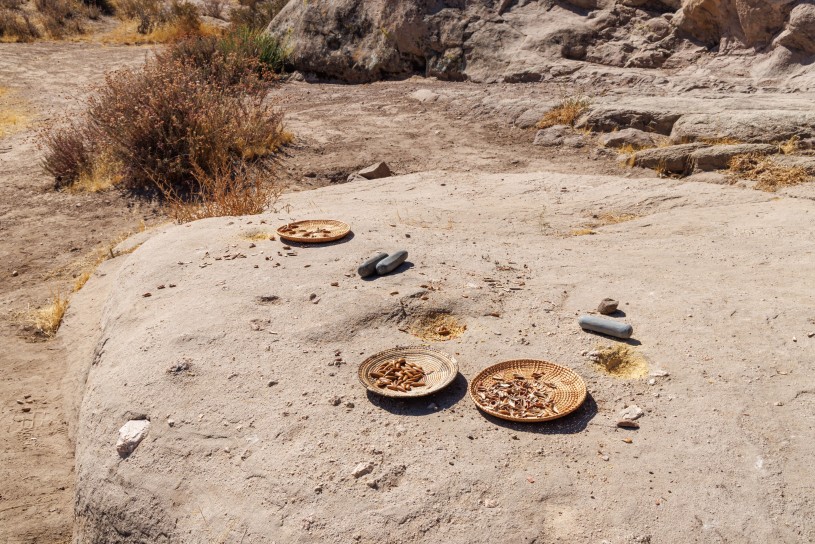
Unlike other types of grinding stones, bedrock mortars, like the replicas present in the Community Plaza, were permanent, formed by repeatedly pounding a hard stationary rock surface over time. The material most commonly used was granite or basalt, chosen for its durability. The crafting process took significant time and effort, as Tribal artisans would use a pestle—often made from a harder stone like basalt—to grind and pound a depression into the bedrock. These mortars became communal tools that could last generations.
Social & Cultural Importance of Bedrock Mortars
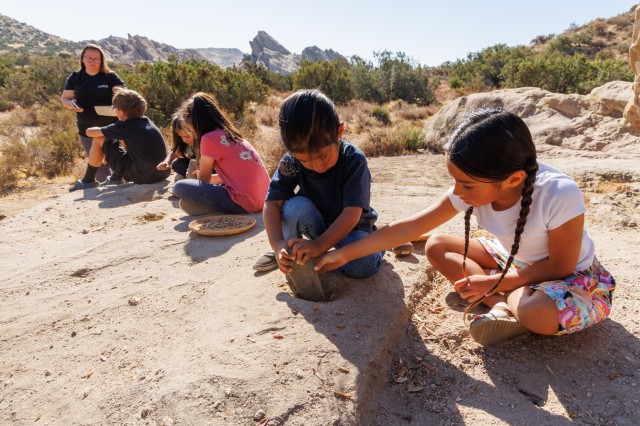
A group of children from the Fernandeño Tataviam Band of Mission Indians grind acorns on a bedrock mortar.
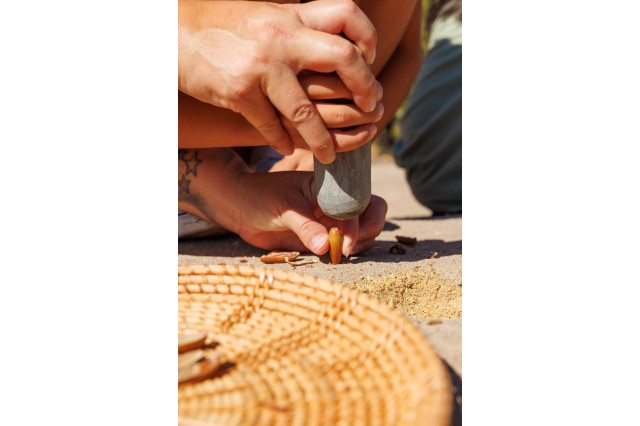
A parent and child from the Fernandeño Tataviam Band of Mission Indians use a stone pestle to grind acorns in a bedrock mortar.
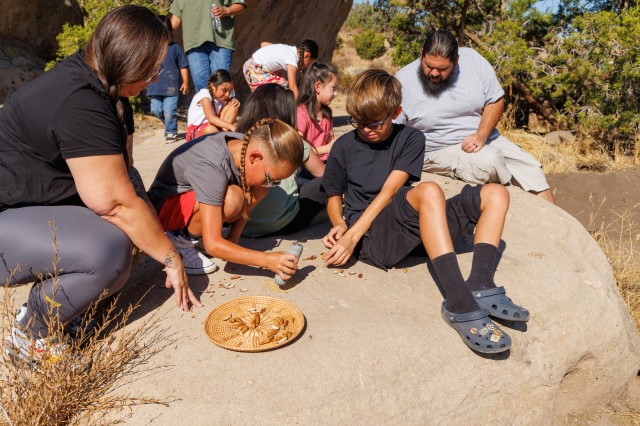
Families from the Fernandeño Tataviam Band of Mission Indians gather to grind acorns atop a bedrock mortar at Vasquez Rocks.
1 of 1
A group of children from the Fernandeño Tataviam Band of Mission Indians grind acorns on a bedrock mortar.
A parent and child from the Fernandeño Tataviam Band of Mission Indians use a stone pestle to grind acorns in a bedrock mortar.
Families from the Fernandeño Tataviam Band of Mission Indians gather to grind acorns atop a bedrock mortar at Vasquez Rocks.
Beyond the practical use of the mortars for processing food, they held significant cultural and social roles within Native communities. Grinding acorns was often a communal activity. These gatherings around the bedrock mortars were social in nature, with many sharing stories, songs, and skills. The presence of bedrock mortars in key village sites reflects the importance of shared labor and communal spaces in sustaining the community.
In many cases, these mortars were passed down through generations, becoming cultural landmarks that symbolized continuity and the deep relationship between people and their environment. The use of bedrock mortars also reflects the belief in living in harmony with nature, using resources sustainably without depleting the environment.
Insights from the Community
Through interviews with FTBMI Tribal Citizens like Gabriel Steve Tristan Jr., Sisco Valenzuela Fernandez, Tiffanie Rayas, and Frank Tristan, we gain deeper insight into the personal significance of bedrock mortars and other traditional practices.
It nurtured the people back then... it was a part of them surviving, you know, that's one of the big things for it to be that embedded into the stones, shows how much they use it that way.
FTBMI Tribal Citizen Gabriel Steve Tristan Jr., of Chumash and Tataviam cultural heritage, reflects on the enduring role these tools played in survival, as well as his personal experiences using grinding stones at William S. Hart Park during an annual Acorn Gathering.
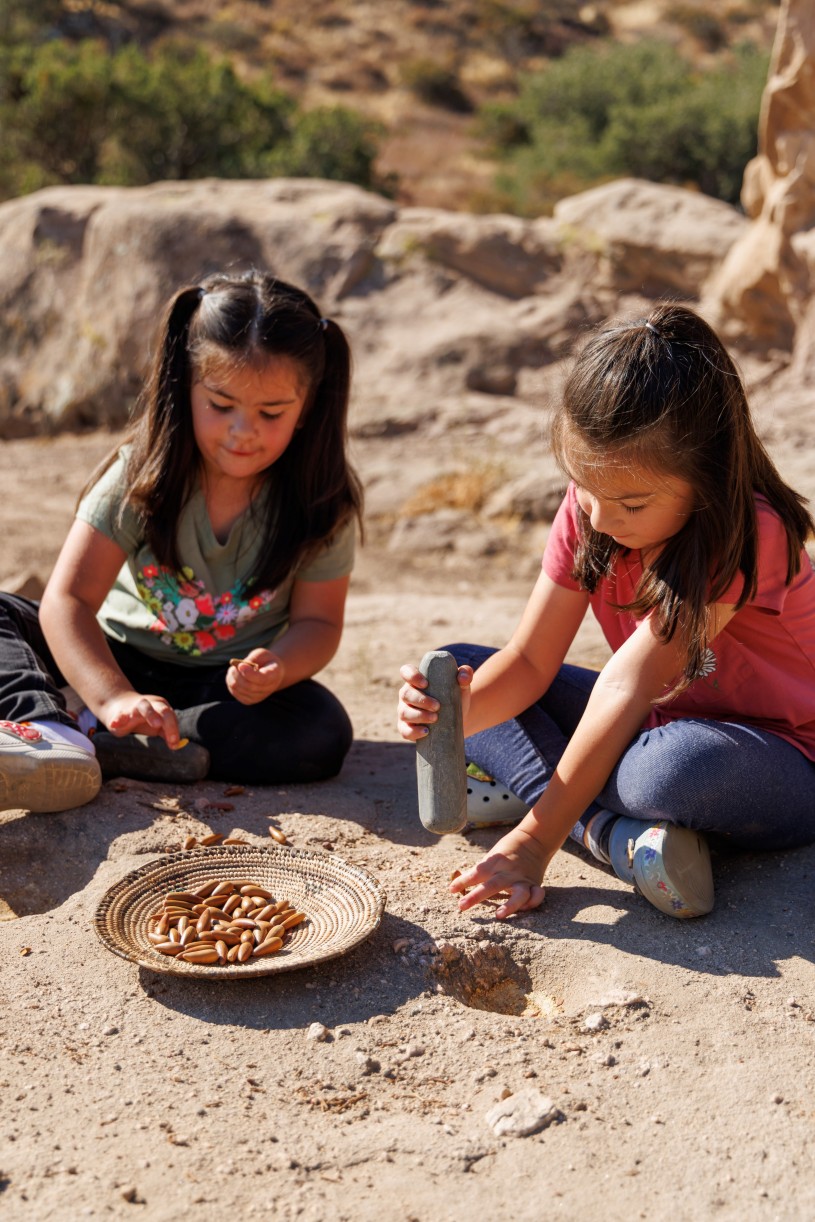
It does mean a lot to us knowing that we can still do it today and still be able to participate in what our ancestors did.
FTBMI Tribal Citizen Sisco Valenzuela Fernandez echoes Gabriel’s sentiments. He describes how participating in the Acorn Gathering at Newhall with his children helped him reconnect with his ancestors.
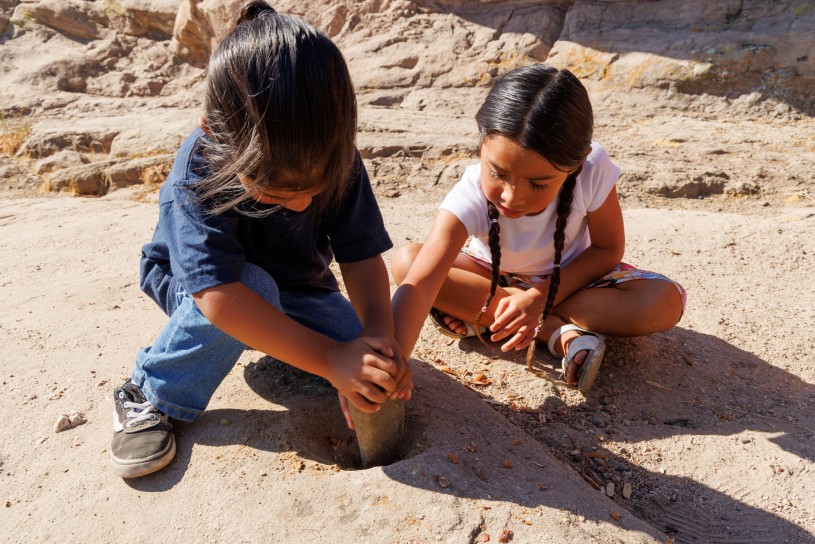
"Growing up, because of the missionization of Natives, you know them pulling the Natives into the missions, a lot of us strayed away from Native cultures... But it's a beautiful thing to see... my niece is out there reclaiming something that was traditional."
FTBMI Tribal Citizen Frank Tristan’s reflections add another layer to this narrative. He discusses the impact of colonization on his family’s connection to traditional practices, yet he also celebrates the resurgence of interest in these traditions among younger generations.
If we forget these traditions, or we don’t keep practicing them, they could die out... I’m gonna make sure that [my kids] are part of knowing where they come from and knowing that the traditions of our people survived.
Frank emphasizes the importance of ensuring that future generations remain connected to their roots.
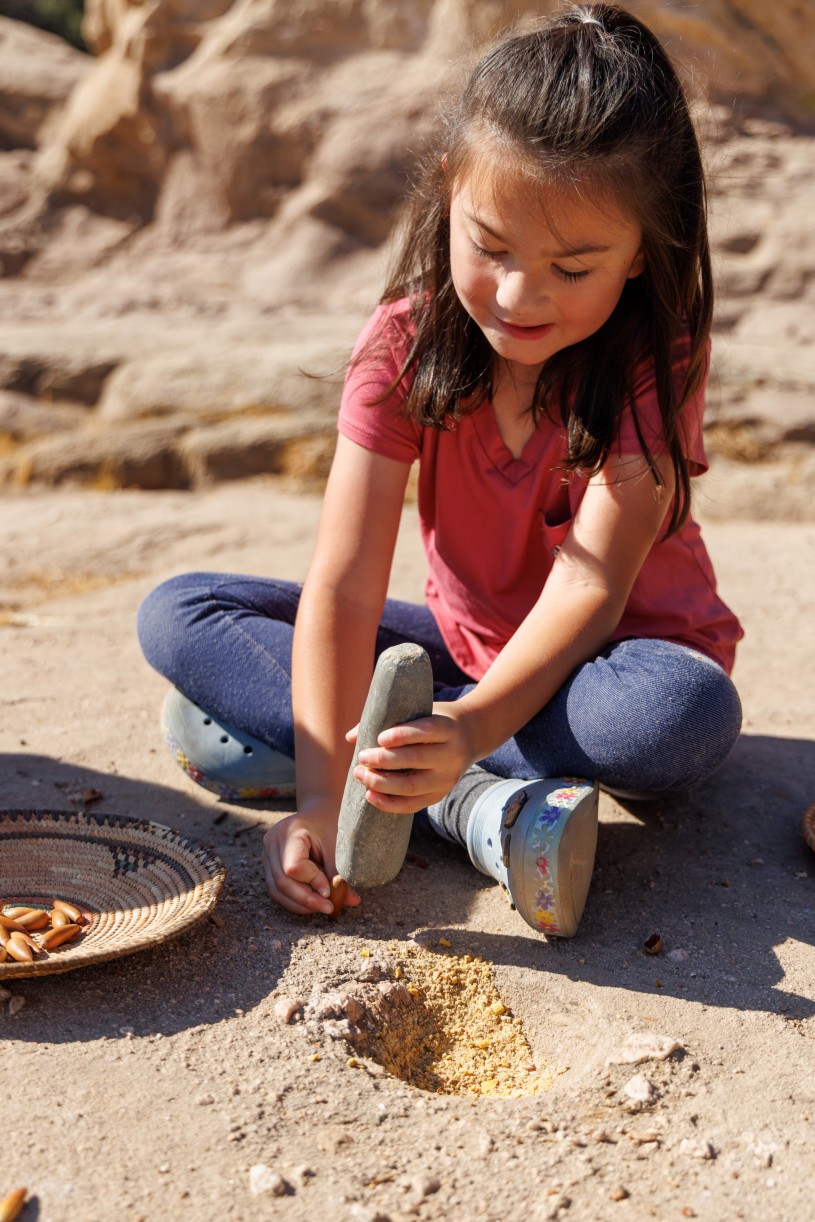
It means a lot to be a part of it, to have my kids be a part of it... It's heart-filling...
For my kids will be able to teach their kids something that our parents were unable to teach us, it's heartfelt to have the opportunity to teach our kids our heritage.
FTBMI Tribal Citizen Tiffanie Rayas speaks to the emotional depth of reconnecting with traditional practices and the profound impact it has on her family. Her reflections highlight the significance of passing down cultural knowledge and traditions to future generations.
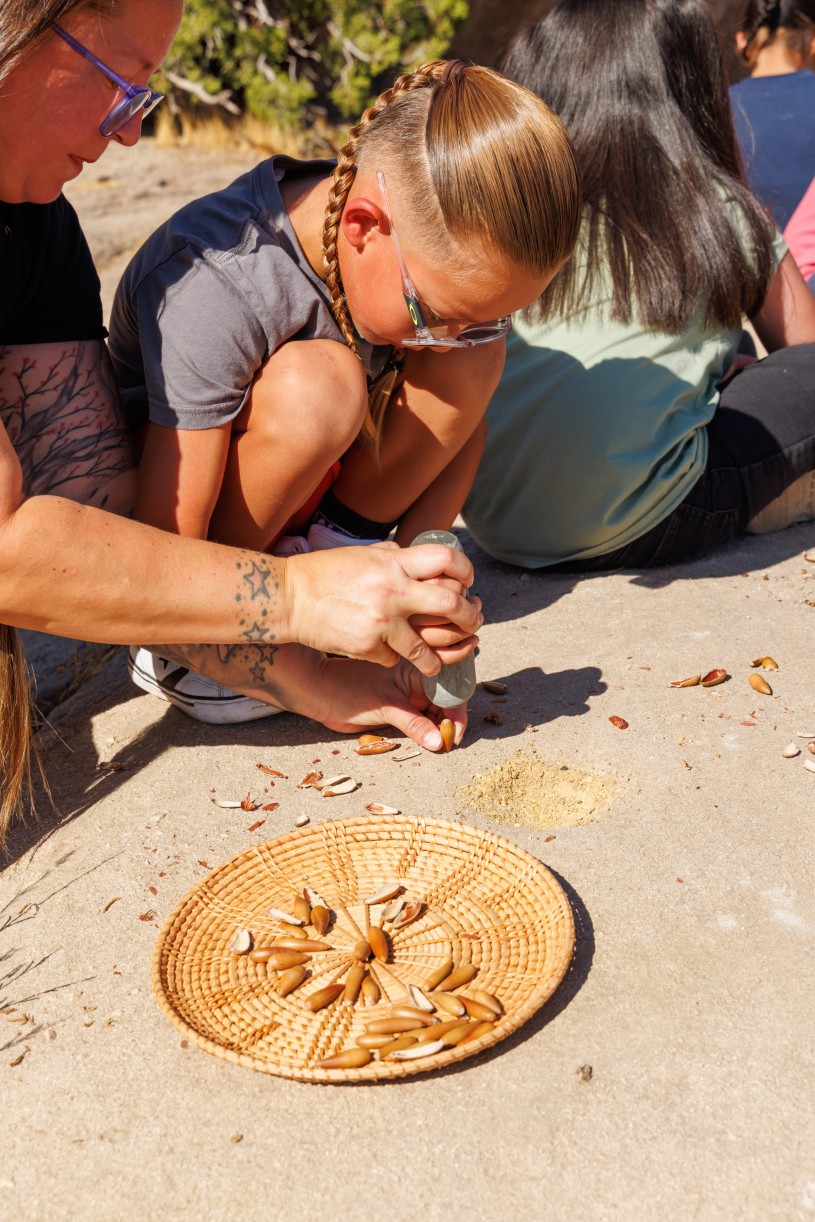
Acknowledgments
NHM would like to acknowledge and extend our heartfelt thanks to our Community Partner the Fernandeño Tataviam Band of Mission Indians for sharing their knowledge about bedrock mortars and allowing us to photograph for this story, helping to educate and inspire the public. To learn more about the Fernandeño Tataviam Band of Mission Indians, feel free to visit their website at: https://www.tataviam-nsn.us/
